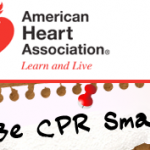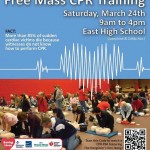
Keith Ahrens
Health tips and discussions, motivational articles and positive lifestyle coaching from Lifestyle Change Expert, Keith Ahrens
 I was selected to by the American Heart Association to attend the You’re the Cure on the Hill Lobby Days in Washington D.C. next week.
I was selected to by the American Heart Association to attend the You’re the Cure on the Hill Lobby Days in Washington D.C. next week.
The event will include more than 350 Advocates, Medical Researchers, Doctors, and Survivors.
I was asked to represent the AHA and attend as a Survivor, National Advocate, and Heart Hero.
We’ll be on Capitol Hill to share our stories with our Senators and Congressmen and ask our legislators’ to support the important legislation that would help prevent heart disease and stroke.
We’re asking for support and passage of the FIT Kids Act and Safe Routes to School legislation, which would help prevent childhood obesity by promoting quality physical education and safe walking and bicycling paths to schools– and asking for vital funding for medical research that can lead to improvements in the prevention and treatment of heart disease and stroke.
I’ve included some items we’ll be “Asking” for lobbying for with bullet points below from the AHA for our Lobby Day and the Facts to back them up.
ASK: Please appropriate $35 billion for the NIH in 2012 to support research that (1) improves health, (2) spurs economic growth and innovation, (3) creates jobs, and (4) advances science to help find better ways to prevent and event cure heart disease and stroke.
Fact: NIH invests a mere 4{1ee8873d3da54571ef77633feec9b2f18618b0dba2f28faf42edb28003d1c6f7} of its budget on heart research and 1{1ee8873d3da54571ef77633feec9b2f18618b0dba2f28faf42edb28003d1c6f7} on stroke research even though heart disease, stroke and other forms of cardiovascular disease remain the No. 1 and most costly killer of Americans. These funding levels are not commensurate with scientific opportunities, the numbers afflicted, and the economic toll this disease exact on our Nation.
Fact: A large portion of NIH research is focused on reducing heart disease and stroke risk factors, including high blood pressure and cholesterol, tobacco use, and physical activity.
Fact: NIH funds research in every state and in 90{1ee8873d3da54571ef77633feec9b2f18618b0dba2f28faf42edb28003d1c6f7} of congressional districts. The typical NIH grant supports about 7 mainly high-tech full-time or part-time jobs. In one year, every dollar that NIH distributes in a grant returns more than $2 in goods and services to the local community.
REMEMBER: Research remains our best hope to prevent and even cure heart disease and stroke.
ASK: Please co-sponsor the FIT Kids Act.
Fact: Childhood obesity in the United States is an epidemic. About 1 out of every 6 children and adolescents ages two to 19 are considered obese. As these obese children grow into adulthood, they have a much greater risk of developing and dying from heart disease. Their poor health also pushes up medical costs and lowers our military preparedness.
Fact: Only 3.8{1ee8873d3da54571ef77633feec9b2f18618b0dba2f28faf42edb28003d1c6f7} of elementary, 7.9{1ee8873d3da54571ef77633feec9b2f18618b0dba2f28faf42edb28003d1c6f7} of middle, and 2.1{1ee8873d3da54571ef77633feec9b2f18618b0dba2f28faf42edb28003d1c6f7} of high schools provide daily physical education or its equivalent for the entire school year. Twenty-two percent of schools do not require students to take any physical education at all.
Fact: National guidelines recommend that children engage in at least 60 minutes of physical activity most days of the week – and 30 minutes should be during the school day.
REMEMBER: Schools need to be a part of the solution to the childhood obesity epidemic and this includes telling parents what is provided in the way of physical education during the school day.
ASK: Please support the Safe Routes to Schools program at current funding levels ($183 million/year) in the next Transportation bill.
Fact: Just 13{1ee8873d3da54571ef77633feec9b2f18618b0dba2f28faf42edb28003d1c6f7} of children walk or bike to school today, down from nearly 50{1ee8873d3da54571ef77633feec9b2f18618b0dba2f28faf42edb28003d1c6f7} in 1969. A California study showed that schools that received infrastructure improvements through the Safe Routes to School program increased walking and bicycling by20 to 200{1ee8873d3da54571ef77633feec9b2f18618b0dba2f28faf42edb28003d1c6f7}.
Fact: Walking one mile to and from school each day is two-thirds of the recommended sixty minutes of physical activity a day. Children who walk to school have higher levels of physical activity throughout the day.
REMEMBER: More than 10,000 schools and communities across all 50 states have benefited from Safe Routes to Schools, which has helped build sidewalks, pathways, and safe street crossings. The program creates opportunities for daily physical activity and improved health for kids and for other members of the community.











